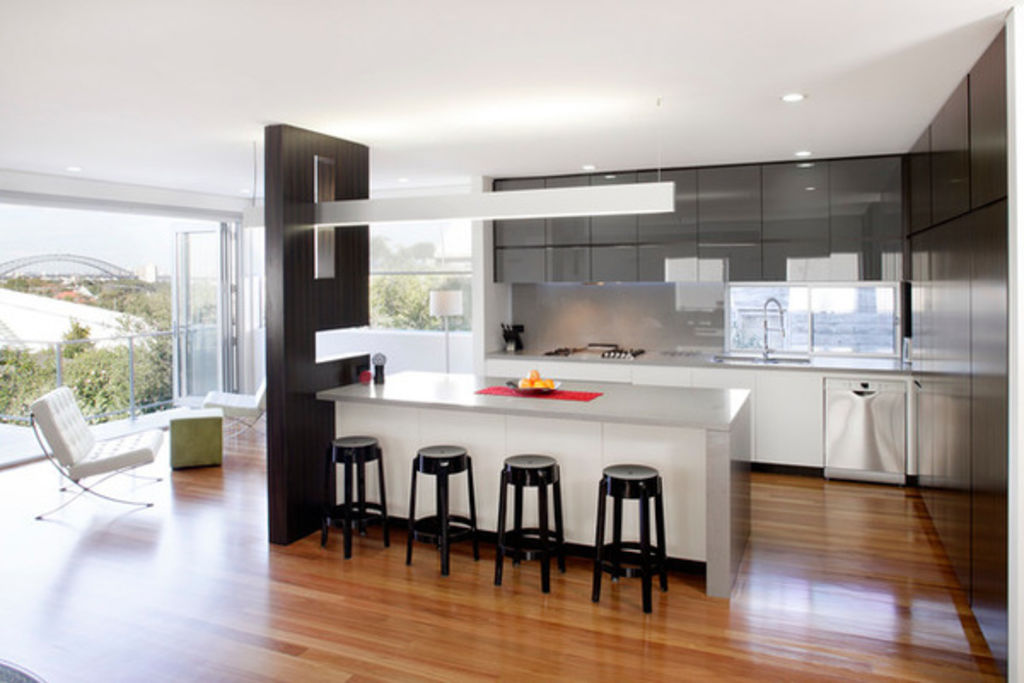Six ways to save on your kitchen reno

Author: Nik Kokotovich
Kitchen renovations are so popular these days that just about everywhere you look is inspiration for your project or a grand idea. It’s why reality TV home improvement shows rate so well – everyone wants a quick fix for free (or as little expense as possible) … and the kitchen, one of the most used rooms in the home, is usually the first thing on the list for a makeover. But how do you get the kitchen you want without feeling overwhelmed by choice – think of all those beautiful retailer showrooms with different styles and ranges to choose from; flat pack options and the many different places to purchase them; and on top of that, the price differences and quality range to decide on. Here’s how to avoid all that drama you see on TV and, most importantly, the hefty price tag.

2. Cut out the middleman
As a builder, I go direct to a kitchen manufacturer rather than a retailer that has a nice showroom with a choice of pre-designed kitchens and a full project management-like service. There are many small business kitchen manufacturers that work out of factory units in local industrial estates that will help you design and build your dream kitchen at a fraction of the cost of big retailers. You can certainly remove your old kitchen yourself, and find a local plumber and electrician to disconnect and reconnect your services. By doing so, you avoid paying marked-up prices and highly-inflated charges due to company overheads and project management fees.

3. Avoid complex DIY kitchens
In recent years, flat packs have evolved and are getting more and more popular. However, they can be very complex and difficult, not only to put together, but also to install. The things to consider when doing it yourself are the tools you will need – more than just a screwdriver and Alan key! You will need sophisticated power tools such as a jigsaw, electric plane, power saw, cordless drill and so on. When it comes to installation, you will also need to contend with out-of-level floors, uneven surfaces and out-of-plum walls, which makes installation difficult, even for experienced professionals. You can choose to hire a contractor to come in and do it for you, but then you have to pay for that service as well. The bottom line is that by the time you go through this entire process and spend all your time and energy trying to achieve a professional job, you will have spent just as much money, if not more, than getting it made by a professional kitchen manufacturer in the first place.
4. Avoid relocating plumbing and electrical
The single most expensive item other than the new kitchen itself is the relocation of plumbing and electrical services. If you choose to relocate your kitchen sink, dishwasher, oven, cooktop, fridge, etc. from where it was originally, services such as water supply, drainage, gas and electricity will also have to be relocated to suit. The type of home you have will play a part in the cost to relocate these services. For example, if you have a concrete slab on the ground, you may need to cut it up and jack hammer it out to make way for the new services and then re-concrete it. If you can renovate your kitchen without the costly exercise of relocating the services, you will definitely save money. If you are not sure whether you can move these services, ask the kitchen manufacturer for advice.
Browse a wide selection of kitchen sinks online

5. Shop around
There are so many kitchen builders out there that prices can be highly competitive. The same goes for your white goods. Be sure to get at least three comparative prices and ensure you are comparing apples for apples. What I mean by that is to make sure that you include the same items and level of quality in each quote because different materials or finishes will change the price. Ensure that your quote includes installation, and get a clear understanding of what it doesn’t include so you don’t get hit with unexpected charges.
6. Communicate like a pro
Time is money, so make sure everyone involved including the plumber, electrician, tilers, painters, glaziers and installers are kept in the loop and up-to-date with your schedule and expectations. It’s the only way to avoid unexpected charges, so if something changes, be sure to inform all of your tradesmen immediately. Finally, remain flexible and be prepared to adapt to unforeseen changes should something go off course throughout the renovation.
We recommend
We thought you might like
States
Capital Cities
Capital Cities - Rentals
Popular Areas
Allhomes
More







